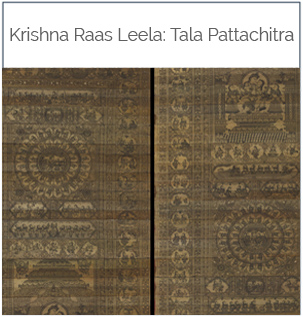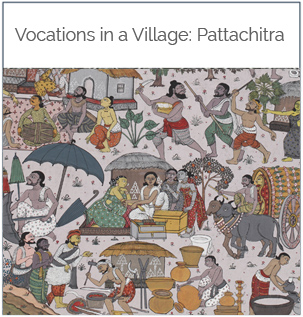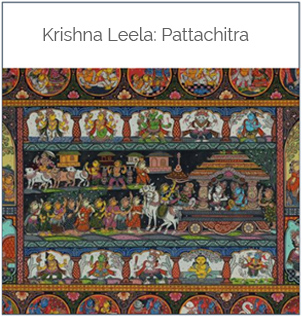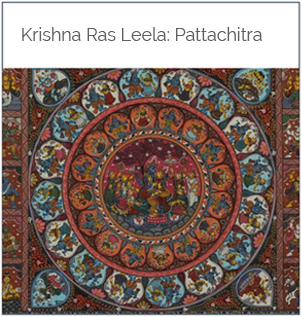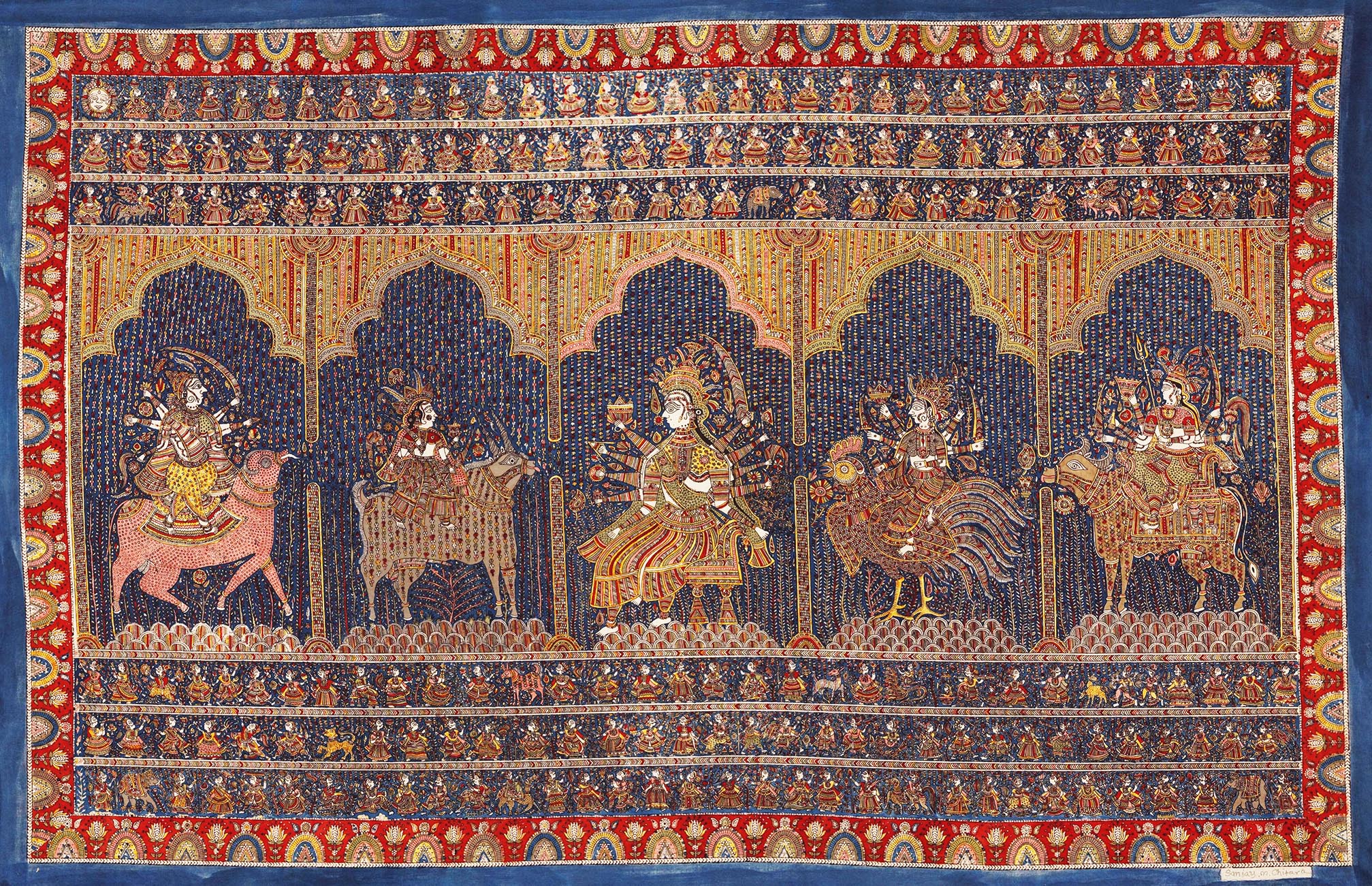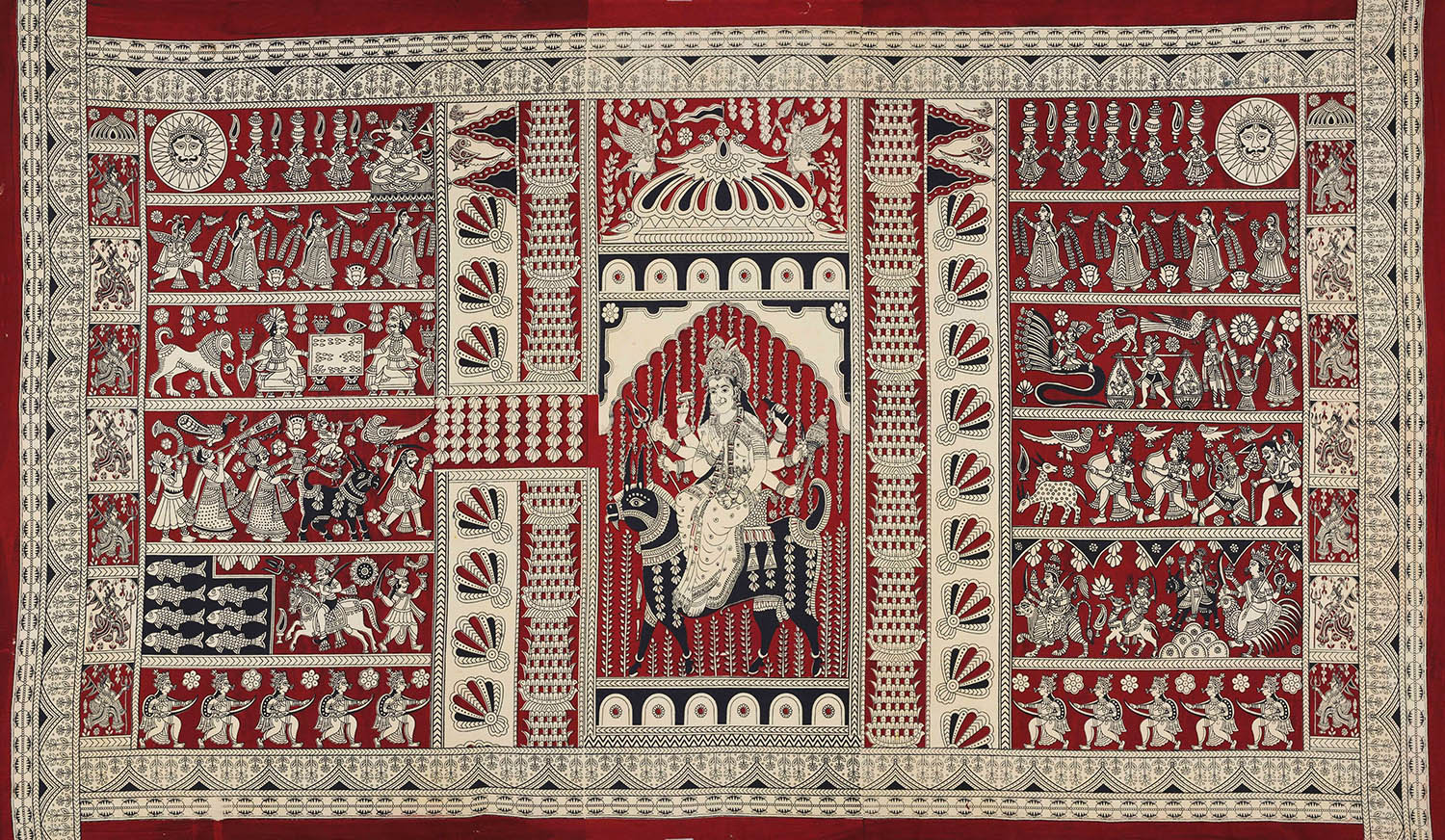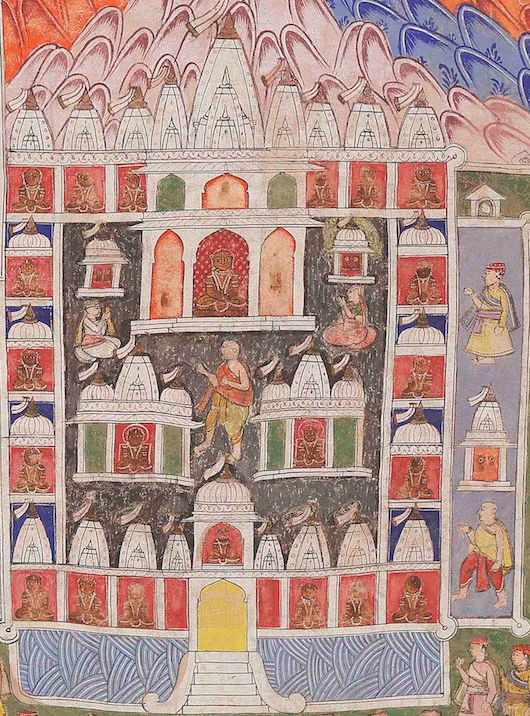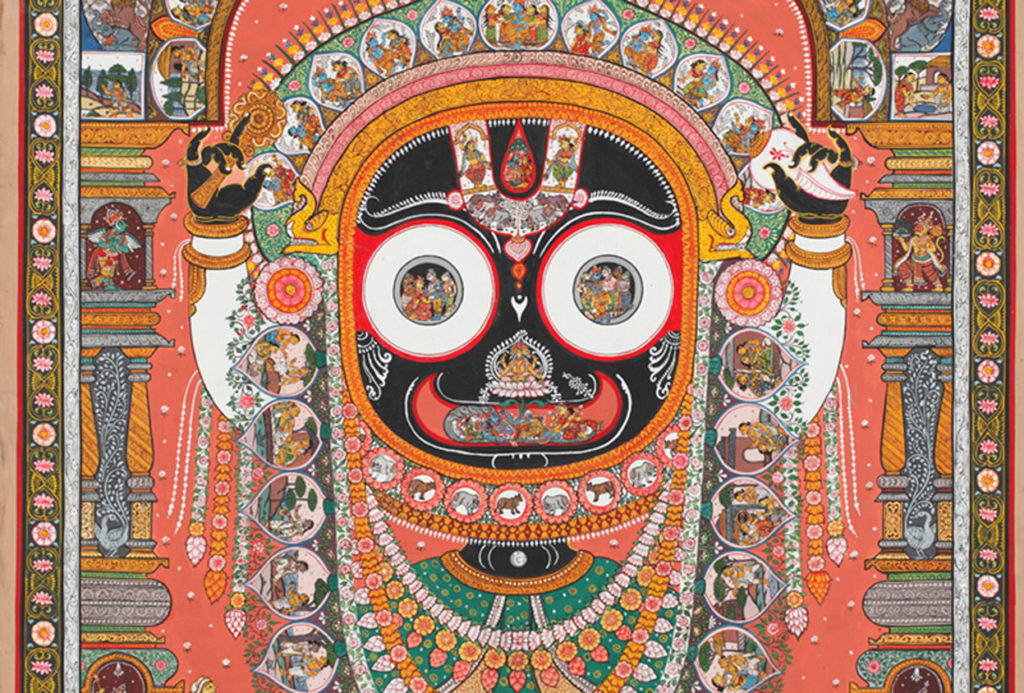
PATTA PRIMER
EYES RIGHT
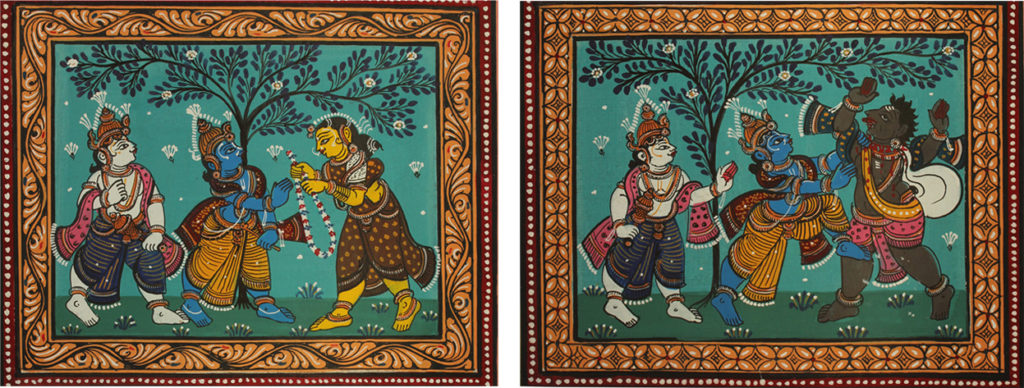
Thanks to its harmonious play of colours, pleasing symmetry and recognisably Indian motifs, a Pattachitra is a joy to behold even without any context. But the discerning eye will find a wealth of expressions hidden between those pretty floral borders. Chitrakar Akshaya Kumar Bariki tells us there are 21 different ways to draw a character’s eyes in the Puri school of painting. Anger, happiness, devotion, infatuation—a painter can convey a range of different emotions through little tweaks in the placement of the pupils, the shape of the eye, the drooping of a lid or the arch of a brow. Take the two facing panels above, which are part of a larger tapestry. Notice how Lord Krishna’s expression changes from serene bliss as he gazes at Radha, to alert vigilance as he stares down a demon. Given how little room there is to maneuver in these panels, it’s extraordinary how much storytelling Pattachitra packs into every square inch. There are some common cues used by all artists. Certain protagonists are associated with certain colours: Lord Jagannath’s skin is black, Krishna’s is blue and Rama’s is green; while Sita’s sari is red, Parvati’s is usually blue. The shape of a moustache (or lack thereof) can also hint at the identity of the character, as this article on the Indian crafts site Gaatha.com points out.

FLOCK ART
They flutter in the borders. They perch on temple roofs. They dot empty spaces. If Odisha Pattachitra had to pick a mascot, it would be the common Indian parakeet. They’re everywhere!

SHADE CARD
Unlike artificial colours that flash when new and lose sheen over the years, natural ones used in classical Pattachitra paintings have a soft glow that lasts forever. They’re worth the effort it takes to make a stone bleed a rainbow
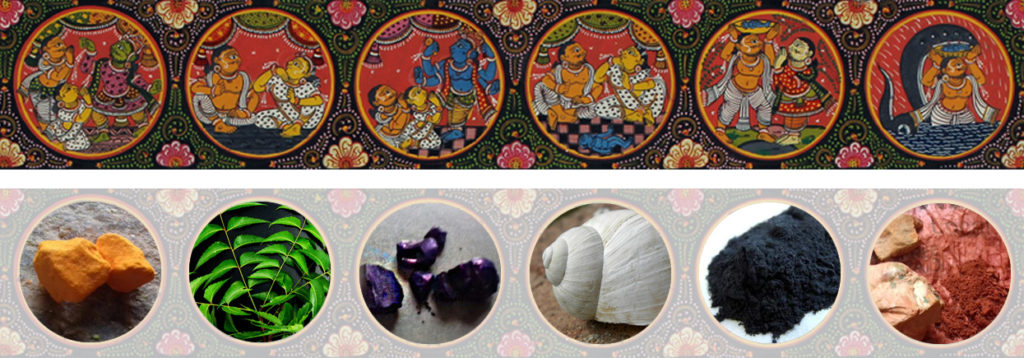
Yellow comes from haritala (a mineral); blue comes from indigo; white comes from powdered conch shells; red comes from hingula (a mineral); green comes from leaves like neem; black comes from soot
ART IN THE MARGINS
A Pattachitra apprentice starts by working on the border. Only once they perfect it can they inch their way towards the more important figures in the centre. But this doesn’t mean the border is insignificant. Far from it, actually. Each painting will have a distinctive border that derives its colour scheme and form from the central theme. The perfectly symmetrical, near-identical figures they contain are drawn freehand and richly detailed. The outermost border will usually have an intricate floral pattern and inner ones will be simpler and more geometric. Lotus, lilies and other water plants are popular motifs, as are birds and snakes. A chitrakar hates a vacuum and even a small space between two panels will be filled up with repeating patterns, like leaves or dots. Watch the video below for an idea of the rich variety that lives in the margins of any Pattachitra work
FROM SCRATCH
A Pattachitra canvas is a bug-repelling, eco-friendly, practically indestructible piece of fabric. Here’s how to DIY

TAKES A VILLAGE
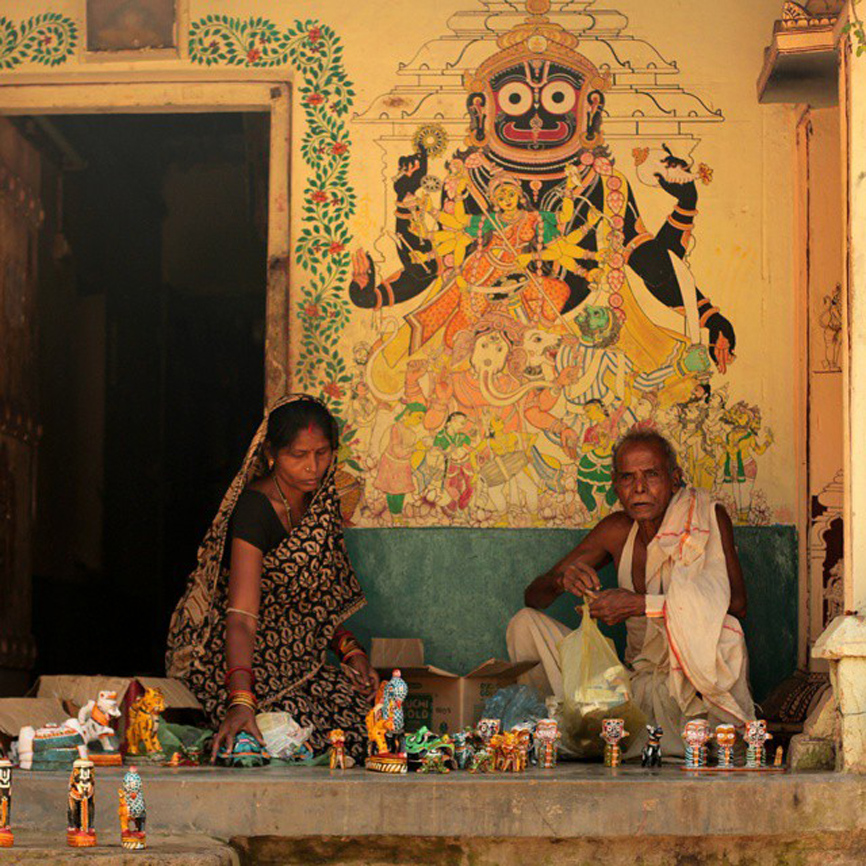
Image courtesy: Nihal Parashar/Creative Commons
While most artists have to painstakingly carve a refuge where they can block out the noise of daily life and immerse themselves in practice, those from Raghurajpur, Odisha are born with an advantage. This is a village dedicated to the arts. A painter, dancer or craftsperson can be found in each home. But why here? What’s so special about Raghurajpur? Here’s one theory: “A Chaitanya bhakt from Bengal came and settled here which was then a jungle. He made a representation of Jaganath. He colored the face of the Lord from coal, which is why Jaganath is still represented with a black face. This sage was the first artist of the village. In pursuit of the Divine he experimented with limestone and then color and this was the way our village evolved and became an artist’s village.” Read more on VillageSquare.in.

